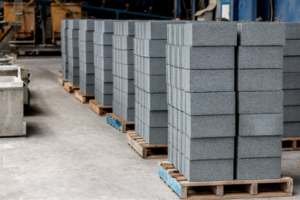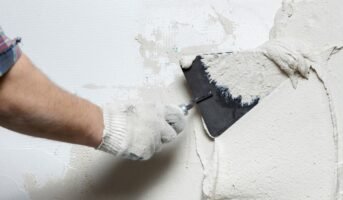Concrete is one of the most important building materials that is responsible for providing strength and life to a structure. It entails certain characteristics that are vital for structural integrity. The permeability of concrete is a concrete property that allows fluids like water, gas, etc., to pass through it. Concrete comprises gravel and sand that is mixed with water and cement.
See also: How to fix cracks in concrete?
Permeability of concrete: Importance
Having an understanding of concrete’s permeability is crucial as it influences the structures’ durability to a great extent. In case of excessive permeability, many issues can arise, including reinforcement steel corrosion, concrete degradation, and structural strength reduction. Moisture penetration may also result in the growth of mould and interior finishes deterioration.
Factors affecting the permeability of concrete
Structure of the pore
The pore arrangement and size of concrete have an impact on its overall permeability. If the pores are small and well-distributed, it can restrict the movement of fluids.
Treatment adequacy
In case of treating the concrete with admixtures, additives, or sealers can alter its permeability.
Aggregate quality
The aggregate type and quality of concrete have an impact on its permeability. Good aggregates various sizes can fill voids between particles and further reduce the permeability of concrete.
Age
The concrete’s age during the testing time or usage can impact its permeability. Freshly poured concrete may have a higher permeability because of excess water presence.
Cement content
The amount of cement content in concrete directly affects its permeability. High cement content often results in concrete with fewer voids.
Water-cement ratio
The water-to-cement ratio influences the concrete’s porosity. Higher water-cement ratios may lead to more pores and capillaries.
Compaction degree
Proper compaction is essential during the construction process to reduce permeability. If the compaction is inadequate, it can further lead to voids and air pockets.
How to reduce permeability of concrete?
Curing
During the initial phases of concrete setting, adequate curing may help prevent crack formation and ensure that concrete gets the desired strength.
Optimal design
If you choose the correct mix of aggregates, cement and water, it can affect the permeability of concrete.
Sealers and coatings
Applying sealers and coatings to the concrete surface can create a shield, preventing moisture and other substances from infiltration.
Additives
Making use of additives like fly ash or silica fume enhances the properties of concrete. These additives are responsible for filling voids, further making them fluid penetration resistant.
Proper construction practices
Making sure of proper construction techniques usage, like adequate compaction, proper formwork installation, and joint detailing, can help significantly minimise the potential pathways for fluid.
FAQs
What is the permeability of concrete?
The permeability of concrete allows liquids or gases to pass through it.
How to reduce the permeability of concrete?
You can reduce the permeability of concrete by using a lower water-to-cement ratio, adding pozzolanic materials such as fly ash or slag, using a proper mix design, and adding water-reducing admixtures.
How to measure the permeability of concrete?
You can measure the permeability of concrete using methods like rapid chloride permeability test, water absorption test, and oxygen permeability test.
What is the benefit of reducing permeability in concrete?
It can help in increased durability, better resistance to weathering and corrosion, and improved structural integrity.
What is the difference between permeability and porosity in concrete?
Permeability is the ability of a material to allow fluids to pass through it. In comparison, porosity is the amount of pore space within a material.
Can I reduce the permeability of existing concrete?
You can reduce the permeability of existing concrete by use of surface treatments, such as coatings or sealers, or through the use of penetrating concrete densifiers that react with the concrete to reduce porosity and permeability.
How to test the permeability of concrete in the field?
Methods like the water absorption test, the surface resistivity test, or the electrical conductivity test can help you check the permeability of concrete.
| Got any questions or point of view on our article? We would love to hear from you. Write to our Editor-in-Chief Jhumur Ghosh at jhumur.ghosh1@housing.com |

Khushi Jha, a graduate in history and political science from the University of Delhi, doesn’t restrict herself to a single domain. Her passion for writing has led her to explore a wide spectrum of topics, ranging from fashion, health and lifestyle to technology, real estate and finance. She has written for platforms like TheVoiceOfWoman, Techsunk, Fitmist and Menskool, among others. When free, she enjoys reading books, including fiction, history and geopolitics.












